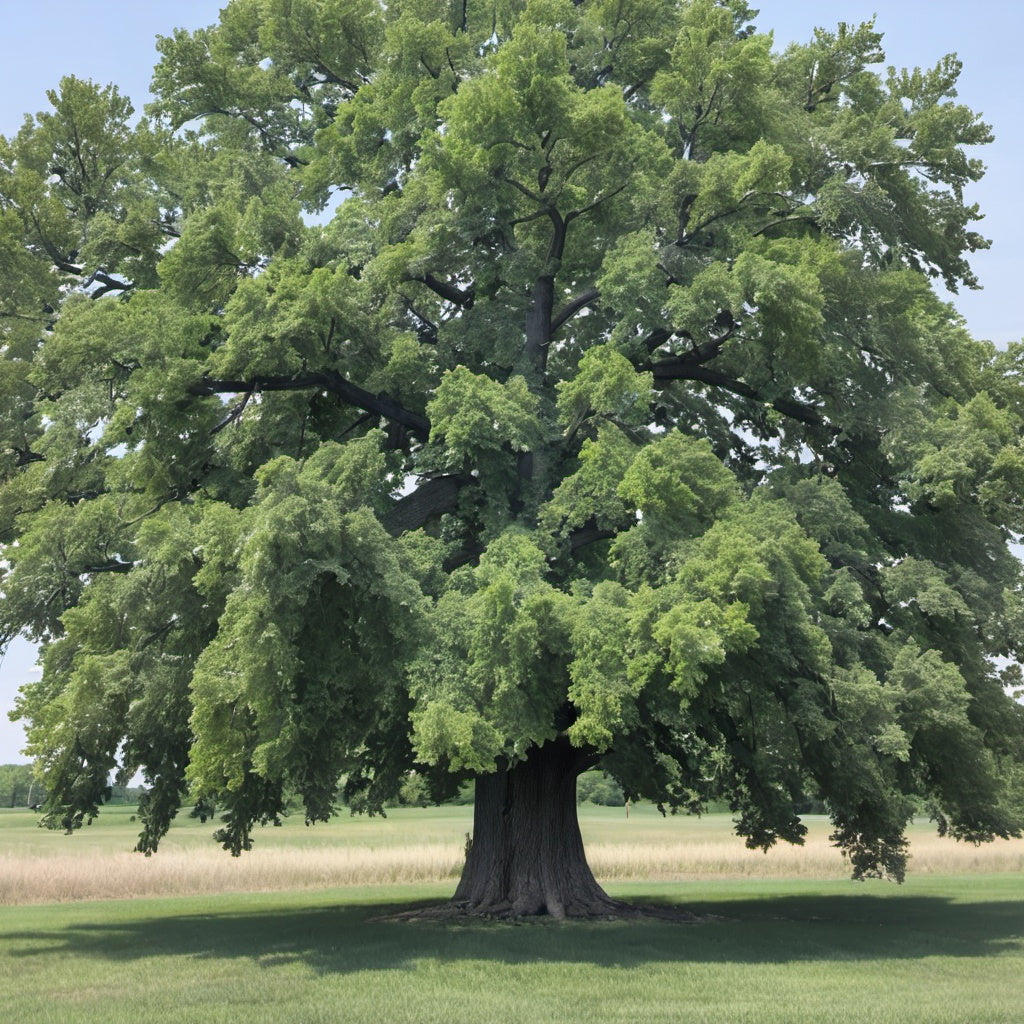Burr Oak Tree Seeds
Burr Oak Tree Seeds
Couldn't load pickup availability
Bur Oak Tree Seeds
(Quercus macrocarpa)
Quercus macrocarpa, commonly known as the Bur Oak, is a large, slow-growing oak native to North America, particularly common in the central and eastern United States and parts of Canada. It’s a member of the white oak group (Quercus subgenus Lepidobalanus) and is notable for its impressive size, rugged bark, and ability to withstand harsh conditions.
Key Characteristics
- Size: Mature bur oaks can reach 70–80 feet in height, with some exceptional specimens growing over 100 feet.
- Leaves: Bur oak leaves are large, typically 6–12 inches long, with deep, rounded lobes and a glossy green surface. In fall, the leaves turn shades of yellow to brown.
- Acorns: Known for its sizable acorns, which are 1–2 inches long and have a distinctive, fringed cap that covers about half of the nut. The bur oak’s acorns provide valuable food for wildlife.
- Bark: Thick and deeply ridged, offering the tree considerable protection from fire, making it one of the more fire-resistant oaks.
- Habitat: Bur oaks are versatile, tolerating a variety of soils and climates, including dry prairies, savannas, and woodlands. They are drought-resistant and can handle urban pollution, making them popular for city landscaping.
Ecological Importance
Bur oaks provide critical habitat and food for various species, including squirrels, deer, and many bird species. The tree is also resilient to pests and disease, making it a hardy and low-maintenance choice for reforestation and conservation projects.
Uses
In landscaping, bur oaks are valued for their durability and long life, as they can live for hundreds of years. Their strong wood has been used for construction, flooring, and barrels. The tree's deep roots make it a great choice for soil stabilization.
Zones: 3 to 8
Germination Range: 60-80%
Stratification Requirement: Seed requires 60-90 days cold moist stratification.
Planting Instructions:
Bur oak acorns have minimal dormancy, meaning they can germinate shortly after falling if conditions are right. After collecting, soak the acorns in water for about 24 hours.
Next, prepare the acorns for planting by stratifying them to simulate winter conditions, which will help with germination. To do this, place the acorns in a plastic bag filled with a moist medium, such as seed starting mix and store them in the refrigerator at 34-40°F (1-4°C) for about 60 to 90 days. Check periodically to ensure the medium remains moist but not waterlogged. During this period, some acorns may begin to sprout. Those with visible root tips are ready for planting and can be sown immediately.
To plant, choose a location with well-draining soil and full sunlight, as bur oaks thrive in such conditions. Sow the acorns one to two inches deep with the pointed end down, as this helps the root grow downward naturally. For best results, plant in the fall or early spring, and water the planting site regularly to keep the soil moist but not soggy. Alternatively, you can start the acorns indoors in pots and then transplant the seedlings once they are strong enough. Young bur oak seedlings require protection from pests and may benefit from a tree shelter or wire cage.
Once established, bur oaks are hardy trees that can withstand drought and poor soil. However, they are slow growers, so patience is essential. With proper care, these trees can live for centuries, developing their characteristic thick bark and wide, sturdy branches that support diverse wildlife and create lasting shade.
Share


